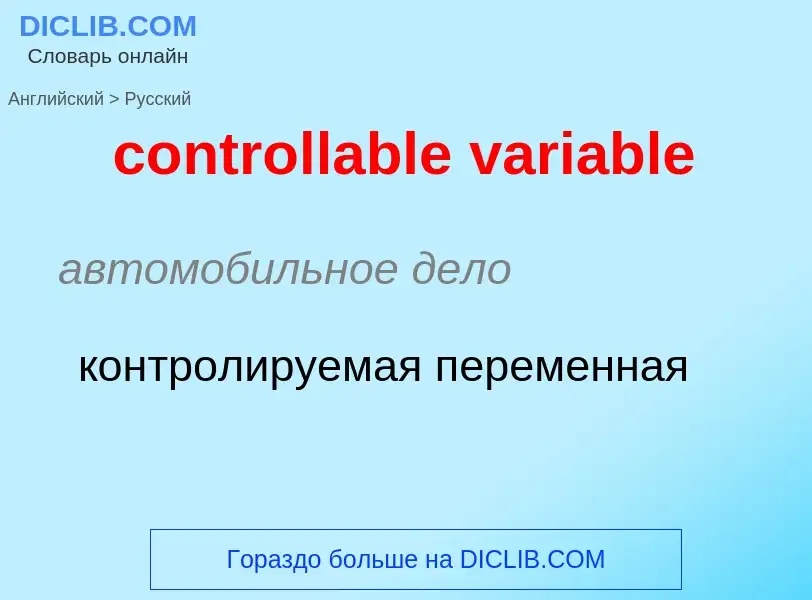Перевод и анализ слов искусственным интеллектом ChatGPT
На этой странице Вы можете получить подробный анализ слова или словосочетания, произведенный с помощью лучшей на сегодняшний день технологии искусственного интеллекта:
- как употребляется слово
- частота употребления
- используется оно чаще в устной или письменной речи
- варианты перевода слова
- примеры употребления (несколько фраз с переводом)
- этимология
controllable variable - перевод на русский
автомобильное дело
контролируемая переменная
Определение
Википедия

In marine propulsion, a variable-pitch propeller is a type of propeller with blades that can be rotated around their long axis to change the blade pitch. Reversible propellers—those where the pitch can be set to negative values—can also create reverse thrust for braking or going backwards without the need to change the direction of shaft revolution.
A controllable pitch propeller (CPP) can be efficient for the full range of rotational speeds and load conditions, since its pitch will be varied to absorb the maximum power that the engine is capable of producing. When fully loaded, a vessel will need more propulsion power than when empty. By varying the propeller blades to the optimal pitch, higher efficiency can be obtained, thus saving fuel. A vessel with a VPP can accelerate faster from a standstill and can decelerate much more effectively, making stopping quicker and safer. A CPP can also improve vessel maneuverability by directing a stronger flow of water onto the rudder.
However, a fixed variable-pitch propeller (FVPP) is both cheaper and more robust than a CPP. Also, an FVPP is typically more efficient than a CPP for a single specific rotational speed and load condition. Accordingly, vessels that normally operate at a standard speed (such as large bulk carriers, tankers and container ships) will have an FVPP optimized for that speed. At the other extreme, a canal narrowboat will have a FVPP for two reasons: speed is limited to 4 mph (to protect the canal bank), and the propeller needs to be robust (when encountering underwater obstacles).
Vessels with medium or high speed diesel or gasoline engines use a reduction gear to reduce the engine output speed to an optimal propeller speed—although the large low speed diesels, whose cruising RPM is in the 80 to 120 range, are usually direct drive with direct-reversing engines. While an FVPP-equipped vessel needs either a reversing gear or a reversible engine to reverse, a CPP vessel may not. On a large ship the CPP requires a hydraulic system to control the position of the blades. Compared to an FPP, a CPP is more efficient in reverse as the blades' leading edges remain as such in reverse also, so that the hydrodynamic cross-sectional shape is optimal for forward propulsion and satisfactory for reverse operations.
In the mid-1970s, Uljanik Shipyard in Yugoslavia produced four VLCCs with CPPs – a tanker and three ore/oil carriers – each powered by two 20,000 bhp B & W diesel engines directly driving Kamewa variable-pitch propellers. Due to the high construction cost none of these vessels ever returned a profit over their lifetimes. For these vessels, fixed variable-pitch propellers would have been more appropriate.
Controllable-pitch propellers are usually found on harbour or ocean-going tugs, dredgers, cruise ships, ferries, cargo vessels and larger fishing vessels. Prior to the development of CPPs, some vessels would alternate between "speed wheel" and "power wheel" propellers depending on the task. Current VPP designs can tolerate a maximum output of 44000 kW (60,000 hp).


